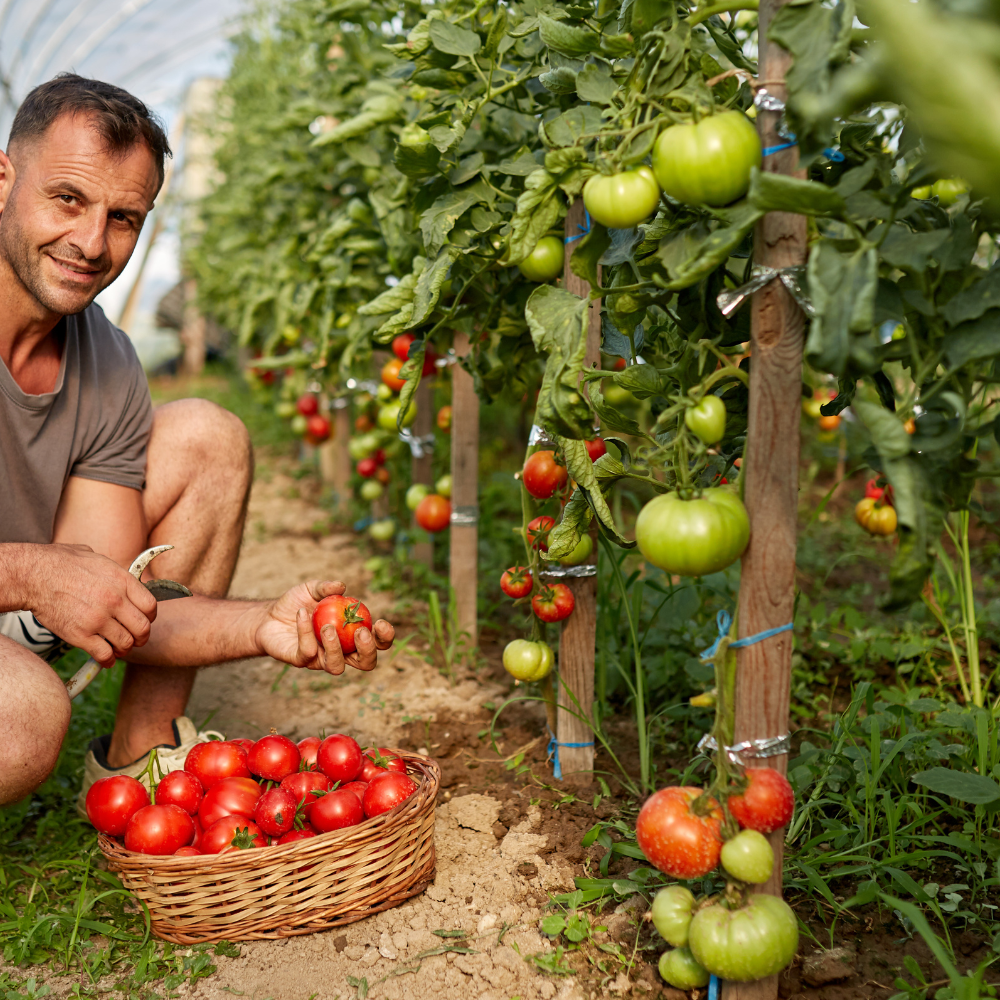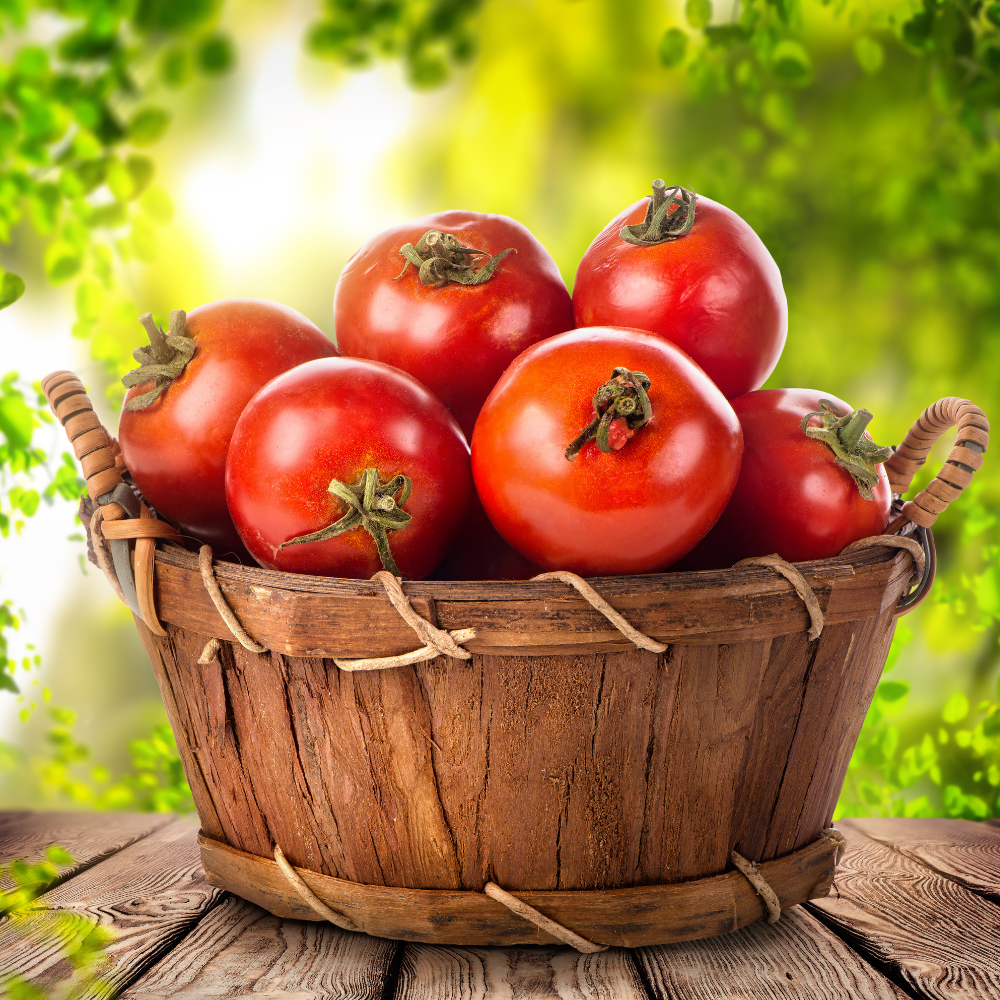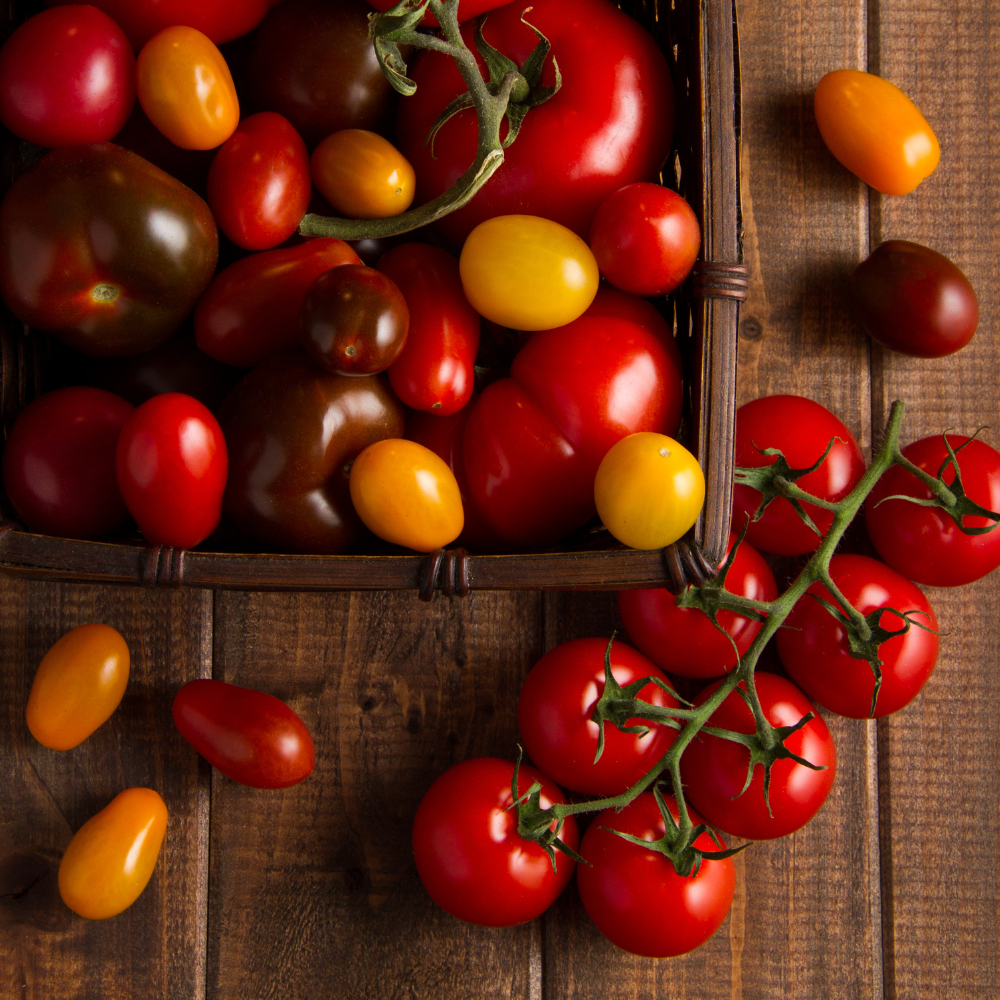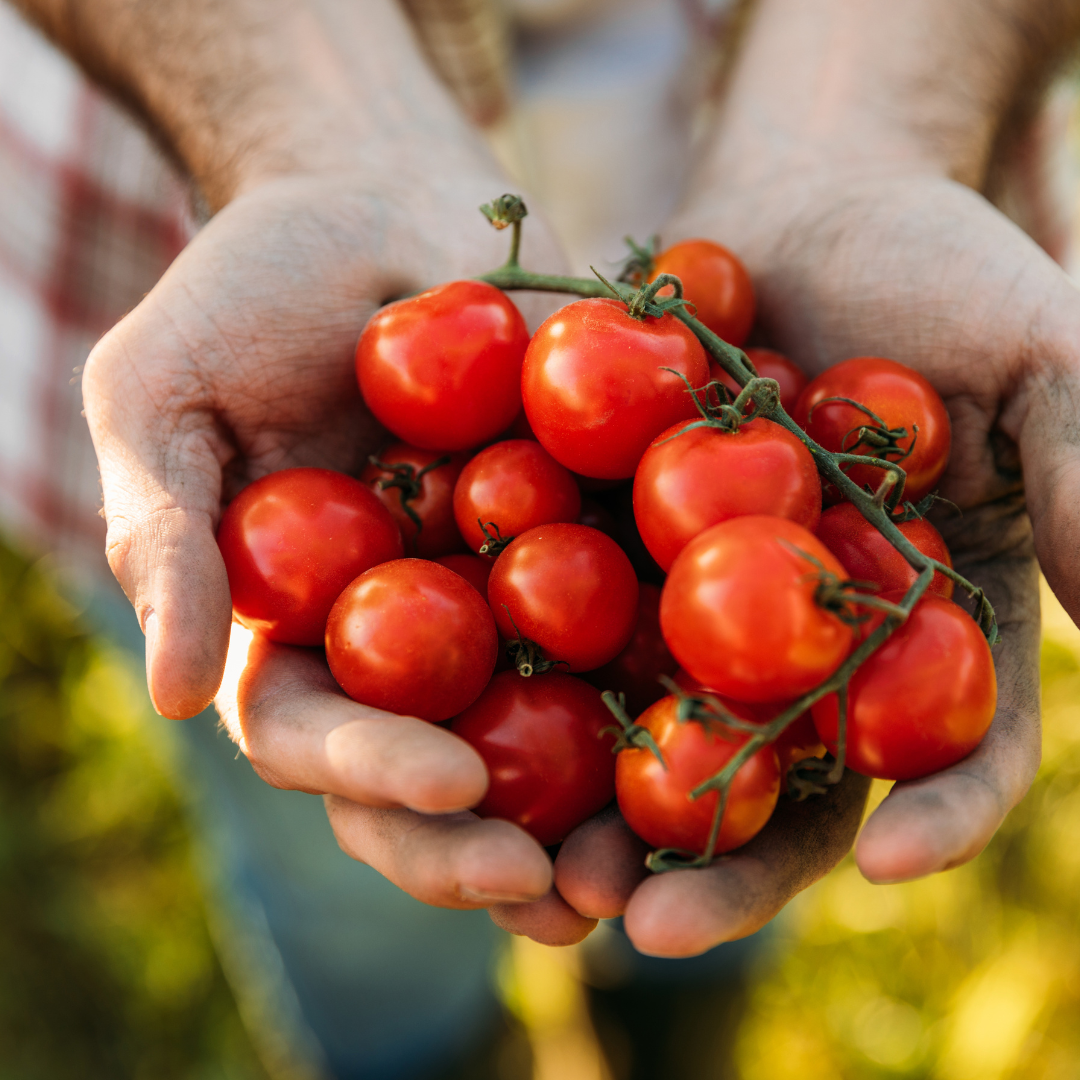Growing tomatoes in a tower garden is a fantastic way to produce fresh, healthy tomatoes in your backyard, balcony, or indoor space. A vertical tower garden allows you to grow many plants in a small area, making it perfect for those who want to grow their own vegetables but have limited space or poor soil quality. In this comprehensive guide, we'll cover everything you need to know about how to grow tomatoes in a tower garden, from selecting the right tomato varieties to harvesting ripe tomatoes.
Table of Contents
- Selecting Tomato Varieties
- Preparing Your Tower Garden
- Planting Tomato Plants
- Watering and Fertilizing Tomato Plants
- Harvesting Ripe Tomatoes
- Tips for Growing Healthy Tomato Plants
- Choosing the Right Container For Tower Tomatoes
- Staking and Trellising Tower Garden Tomatoes
- Temperature and Humidity
- Companion Planting Tomatoes in a Tower Garden
- Frequently Asked Questions
- Conclusion
Selecting Tomato Varieties
When it comes to growing tomatoes in a tower garden, there are two main types of tomato varieties to consider:
-
Determinate tomatoes: These grow to a certain size and produce all their fruit simultaneously. Determinate tomatoes are generally more compact and better suited for container gardening or smaller spaces. However, their shorter production period makes them less ideal for tower gardens, which aim to maximize vertical space and continuous harvests.
-
Indeterminate tomatoes continue growing and producing fruit throughout the growing season. Indeterminate tomatoes are ideal for tower gardens because they can grow vertically and produce fruit consistently over time. As they grow taller, they provide a visually appealing display and allow you to enjoy fresh tomatoes all season.
Some of the most popular indeterminate tomato varieties include:
- Cherry tomatoes: These small, sweet tomatoes are perfect for salads, snacking, or adding flavor to any dish. They come in various colors, including red, yellow, and even purple, which can create an attractive tower garden display.
- Beefsteak tomatoes: Known for their large size and meaty texture, beefsteak tomatoes are perfect for slicing and use in sandwiches, burgers, or Caprese salads. They can take longer to mature, but their impressive size and flavor make them worthwhile. Some great beefsteak varieties are black krim, Cherokee purple, and mortgage lifter tomatoes.
- Heirloom tomatoes come in incredible colors, shapes, and flavors. Each variety has a unique history and has been passed down through generations. Heirloom tomatoes are often prized for their taste and can add visual interest and culinary diversity to your tower garden.
Factors to Consider When Selecting Tomato Varieties:
- Growing Season Length: Choose tomato types with shorter growing seasons for cooler areas and longer growing seasons for warmer regions. Consult local gardening resources or agricultural extension services to determine your area's ideal planting time and variety selection.
- Tomato Type: Decide whether you want to grow beefsteak, cherry, or Roma-type tomatoes based on your preference and culinary needs. Consider the size, shape, color, and flavor profiles best suit your taste and how you plan to use your tomatoes in the kitchen.
Preparing Your Tower Garden
Before planting your tomato plants, you must set up your tower garden. Follow these steps:
-
Add high-quality potting mix: Fill the tower with loose and well-draining potting soil to prevent waterlogging. Choose a soil mix rich in organic matter, such as compost or aged manure, to provide essential nutrients for your tomato plants. You can also incorporate perlite, vermiculite, or coconut coir to improve soil aeration and drainage.
-
Install support: Add stakes or a trellis system to support the tall indeterminate tomato plants. As they grow, these plants will become heavy with foliage and fruit, so a strong support system is crucial to prevent them from toppling over or suffering from stem breakage. You can use various materials for support, such as bamboo stakes, metal cages, or wooden trellises. Just ensure they are sturdy, durable, and non-toxic to your plants.
-
Choose a location: Position your tower garden in an area that receives at least six hours of direct sunlight daily. Tomatoes thrive in warm temperatures and need plenty of suns to produce healthy fruit. Ensure your tower garden is also easily accessible for watering, fertilizing, and harvesting tomatoes.
Planting Tomato Plants
- Disease-free: Inspect the plants for signs of pests or diseases, such as yellowing leaves, spots, or wilted stems. Healthy plants will have a better chance of thriving in your tower garden and producing abundant fruit.
- Robust stems: Look for tomato plants with thick, sturdy stems. These plants are more likely to grow strong and resist damage from wind, pests, and diseases.
- Healthy foliage: The leaves should be a vibrant green and free of any damage, blemishes, or discoloration. Healthy foliage indicates a well-nourished plant that will grow well in your tower garden.
Follow these steps to plant your tomato plants:
-
Bury the stem: Plant your tomato plants deep in the potting soil, exposing only the top few leaves. This will encourage the development of a strong root system, as tomato plants can form roots along the buried portion of their stem. A robust root system is crucial for supporting healthy growth and fruit production.
-
Space your plants: Give your tomato plants enough room to grow by spacing them according to the specific variety's recommendations. Proper spacing helps promote air circulation, which reduces the risk of diseases caused by humidity or moisture buildup.
-
Water thoroughly: Water your tomato plants well after planting to help them settle into the soil and establish their root systems. Keep the soil consistently moist but not waterlogged, as tomatoes are sensitive to fluctuations in moisture levels. Over- or under-watering can lead to issues like blossom end rot or cracking fruit.
Providing Water and Fertilizer to Tomato Plants
Tomato plants require consistent watering and fertilization to produce quality fruit. Follow these guidelines for watering and fertilizing your tower garden tomatoes:
-
Watering: Regularly water your tomato plants, as the potting soil in a tower garden can dry out quickly. A drip irrigation system can automate the process and ensure consistent water delivery. Alternatively, water your plants by hand, careful not to wet the leaves, which can promote disease.
-
Fertilizing: Tomato plants benefit from regular fertilization, as they are heavy feeders and require a steady supply of nutrients to produce abundant fruit. You can use a liquid fertilizer formulated explicitly for tomatoes or a slow-release granular fertilizer that will provide nutrients gradually. Apply the fertilizer according to the manufacturer's instructions, and be careful not to over-fertilize, as this can lead to excessive foliage growth at the expense of fruit production.
Harvesting Ripe Tomatoes
As your tomato plants mature and develop, they will begin to bear fruit. It's essential to monitor your plants and harvest ripe tomatoes regularly. Ripe tomatoes will:
- Feel firm yet slightly squishy to the touch
- Have a vibrant color appropriate for the specific variety
Harvesting Tower Garden Tomato Tips:
- Gently twist the ripe tomatoes off the vine, being careful not to damage the stem or any other part of the plant.
- If you have a large number of tomatoes ripening at once, store them in a cool, dry place for a few days until you're ready to use them.
- Harvest tomatoes regularly to prevent overripening and rot, which can attract pests and diseases.
Tips for Growing Healthy Tomato Plants
In addition to selecting the right tomato seed varieties and providing your plants with the right amount of water and fertilizer, there are a few other things you can do to ensure that your tomato plants are healthy and productive.
- Ensure sufficient sunlight: Ensure that your tomato plants get enough sunlight, as they need at least six hours of direct sunlight each day to produce healthy fruit. If your tower garden is shady, you may need to move it to a sunnier spot or use supplemental lighting.
-
Monitor for diseases and pests: Keep an eye out for common tomato pests, such as aphids, whiteflies, and spider mites, as well as diseases like blight, blossom end rot, and powdery mildew. Act quickly if your tomato plants show signs of pests or diseases to prevent the problem from worsening. Employ organic or chemical control methods as needed, following recommended safe and effective treatment guidelines.
-
Prune your tomato plants: Regular pruning can promote healthy growth and help prevent diseases. Remove any damaged or diseased leaves and any suckers growing in the crotch between the main stem and the branches. Your tomato plants can focus their energy on producing healthy fruit by doing so. Be cautious not to over-prune; removing too much foliage can expose the fruit to sunscald and reduce overall yield.
-
Rotate your crops: Practice crop rotation by not planting tomatoes or other nightshade family members (such as peppers, eggplants, or potatoes) in the same location year after year. This can help prevent the buildup of soil-borne diseases and pests that can affect your tomato plants.
-
Maintain proper airflow: Encourage good airflow around your tomato plants by spacing them appropriately and pruning them as needed. Proper air circulation helps prevent humidity buildup and reduces the risk of fungal diseases.
Choosing the Right Container
When growing tomatoes in a tower garden, selecting the right container is crucial for the success of your plants. Here are some factors to consider:
-
Size: Choose large containers to accommodate the mature size of your tomato plants and provide enough room for their root systems. A general guideline is to use a container with a minimum capacity of 5 gallons (19 liters) for each tomato plant.
-
Material: Containers made of materials like plastic, fabric, or ceramic are suitable options. However, plastic containers retain moisture better, while fabric pots provide better aeration for the root system.
-
Drainage: Ensure your container has proper drainage holes to prevent waterlogging, which can lead to root rot and other problems.
Staking and Trellising
Supporting your tomato plants is vital for their growth and fruit production. Here are some options for staking and trellising your tower garden tomatoes:
-
Cages: Tomato cages support your plants by surrounding them with a sturdy wire structure. Choose cages with large openings to make harvesting easier, and ensure they are tall enough to accommodate the mature height of your tomato plants.
-
Stakes: Wooden or bamboo stakes can support your tomato plants. Secure the main stem of your plant to the stake with soft ties, being careful not to damage the stem.
-
Trellises: Trellises can be constructed from materials like wood or metal, with horizontal and vertical supports for your plants. Attach your tomato plants to the trellis using soft ties or clips, and train them to grow vertically.
Temperature and Humidity
Tomatoes thrive in specific temperature and humidity ranges, which can impact their growth and fruit production:
-
Temperature: Tomatoes grow best in daytime temperatures between 70°F and 85°F (21°C and 29°C) and nighttime temperatures between 60°F and 70°F (16°C and 21°C). Extreme temperatures outside these ranges can result in reduced fruit sets or poor fruit quality.
-
Humidity: Tomato plants prefer moderate humidity levels. High humidity can increase the risk of fungal diseases, while low humidity can cause issues like blossom drop. To maintain ideal humidity levels, ensure proper airflow around your plants, and avoid overhead watering.
Companion Planting
Companion planting involves growing different plant species to promote mutual benefits, such as improved growth, enhanced flavor, or pest control. Some suitable companion plants for tomatoes in a tower garden include:
-
Basil: This herb is said to enhance the flavor of tomatoes and may help repel pests like whiteflies and aphids.
-
Marigolds: These flowers can help repel nematodes and other pests that could damage your tomato plants.
-
Chives, onions, or garlic: These plants may help deter pests like aphids and spider mites.
Remember to avoid planting tomatoes near members of the nightshade family, such as potatoes, peppers, or eggplants, as they can share common pests and diseases.
By incorporating these additional tips and strategies, you can further optimize your tomato growing experience in a tower garden, ensuring the healthiest plants and the most abundant harvest possible.
 Frequently Asked Questions (FAQ) - How to Grow Tomatoes in a Tower Garden
Frequently Asked Questions (FAQ) - How to Grow Tomatoes in a Tower Garden
Q: What type of tomato is best for growing in a tower garden?
A: Indeterminate tomato varieties are the best choice for tower gardens as they grow and produce fruit throughout the growing season. Examples include cherry tomatoes, beefsteak tomatoes, and heirloom tomatoes.
Q: How often should I water my tomato plants in a tower garden?
A: Tomato plants require consistent moisture, so watering them regularly is essential. Watering frequency will depend on climate, container size, and potting mix type. Monitor the soil moisture and water your plants when the top inch of the soil feels dry.
Q: What kind of fertilizer should I use for my tomato plants in a tower garden?
A: Tomato plants benefit from regular fertilization. Use a balanced liquid fertilizer specially formulated for tomatoes or a slow-release granular fertilizer that provides nutrients gradually. Follow the manufacturer's recommended application rates and frequency.
Q: How can I prevent diseases and pests on my tomato plants?
A: To minimize the risk of diseases and pests, ensure proper airflow around your plants, practice crop rotation, monitor for signs of pests and diseases, and treat any issues promptly using organic or chemical control methods as needed.
Q: When should I harvest my tomatoes in a tower garden?
A: Harvest your tomatoes when they have become full color and feel firm yet slightly squishy. Gently twist them off the vine, careful not to damage the stem or other parts of the plant.
Q: Can I grow other vegetables or herbs alongside my tomatoes in a tower garden?
A: You can grow other plants in your tower garden, such as herbs or compatible vegetables. Consider using companion planting to maximize the benefits of growing different plant species together. Some suitable companion tomato plants include basil plants, marigold flowers, chive plants, onions, and garlic.
Conclusion
Growing tomatoes in a tower garden is an excellent way to produce fresh, healthy tomatoes in your backyard or indoor space. By selecting the right tomato varieties, properly setting up your tower garden, and providing your tomato plants with the necessary water and fertilizer, you can enjoy a bountiful harvest of ripe tomatoes throughout the growing season. Remember to monitor your plants for pests and diseases, prune them as needed, and follow best practices for maintaining healthy tomato plants. You can grow delicious, ripe tomatoes perfect for salads, sandwiches, and many other dishes with some care and attention.







